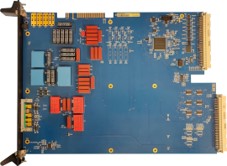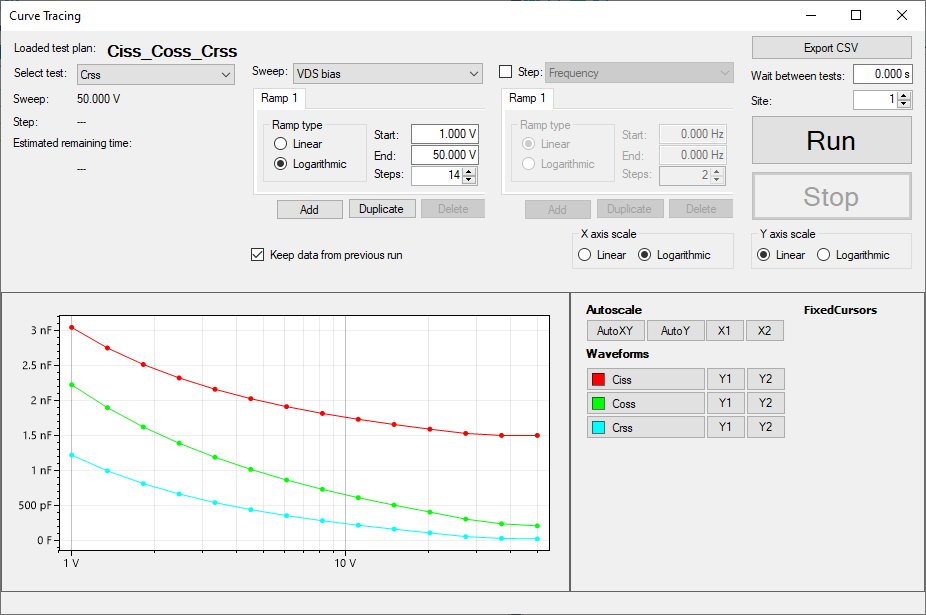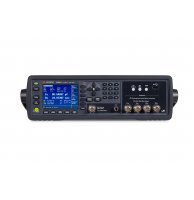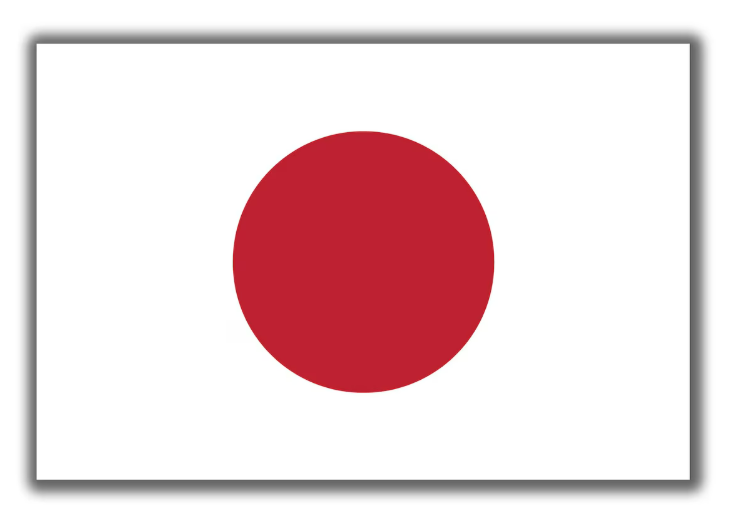Categories
Capacitance Extension - Measurement of Cg, Rg, Ciss, Coss, Crss
EFFITEST series newly allow capacitance measurements together with external LCR bridge (such as E4980AL-102, Hioki IM3565, Wayne Kerr, etc.) and our LCR adapter which provides voltage bias up to 1000V. Effitest can be extended by a capacitance option which allows measurements of RG, CG, Ciss, Coss, Crss including measurement of complete capacitance characteristics (Ciss, Coss, Crss).
The measurement of capacitances is increasingly becoming a critical aspect of production testing. This applies to various components, such as diodes (Cj), MOSFETs (Ciss, Crs, Coss), and IGBTs (Cies, Coes, Cres). The demand now extends beyond simple capacitance measurement, often requiring voltage bias in combination with the measurement process. To meet this need, we have developed a universal LCR adapter that supports biasing up to 1000V. When paired with a 1MHz LCR bridge (or higher - based on used LCR bridge - in general up to 5MHz), such as the E4980AL-102 from Keysight, our Effitest platform can perform biased capacitance measurements in just a few milliseconds (10-20ms for diodes), making it an ideal solution for high-speed production testing. You can also display complete Capacitance characteristics.

Features
- Measurement with bias up to 1000V
- Full capacitance characteristics Ciss, Coss, Crss
- Up to 1, 2 or 5MHz (depends on used LCR bridge)
- Open & Short correction on demand from our SW SCADUS
- Correction of cables connections
- Full capacitance measurement in few milliseconds
- Virtual oscilloscope
Measurement of Capacitances (Ciss, Crss, Coss) on a MOSFET in SCADUS

Full capacitance characteristics on a MOSFET on Effitest





 Japan web page
Japan web page